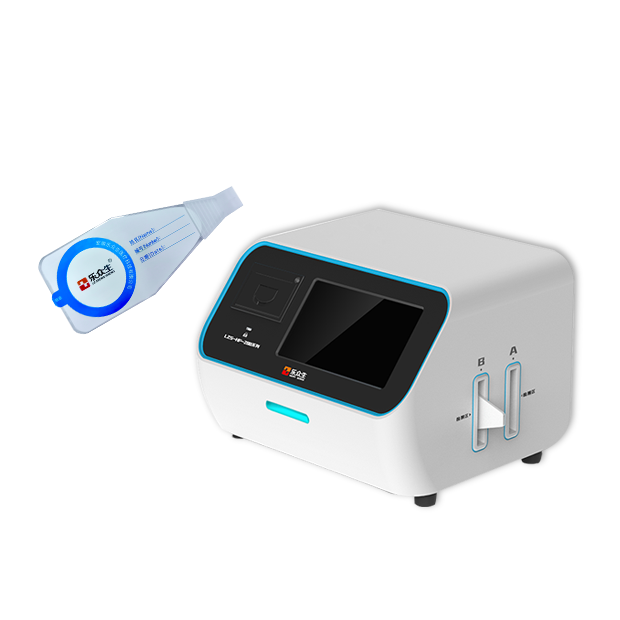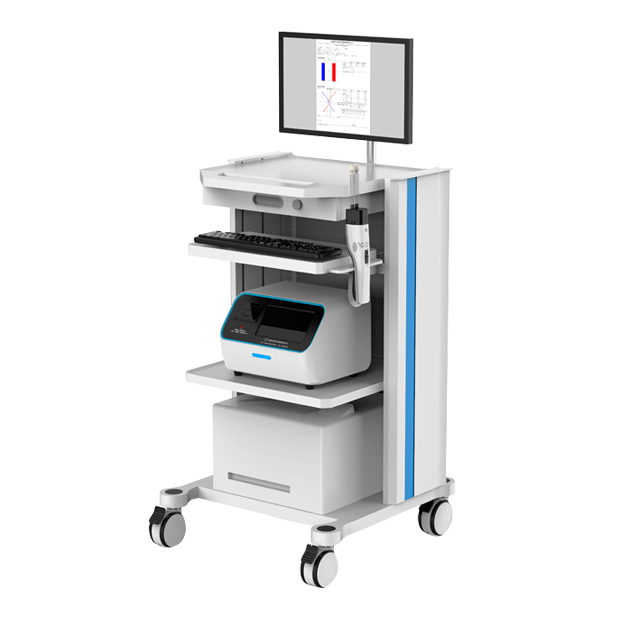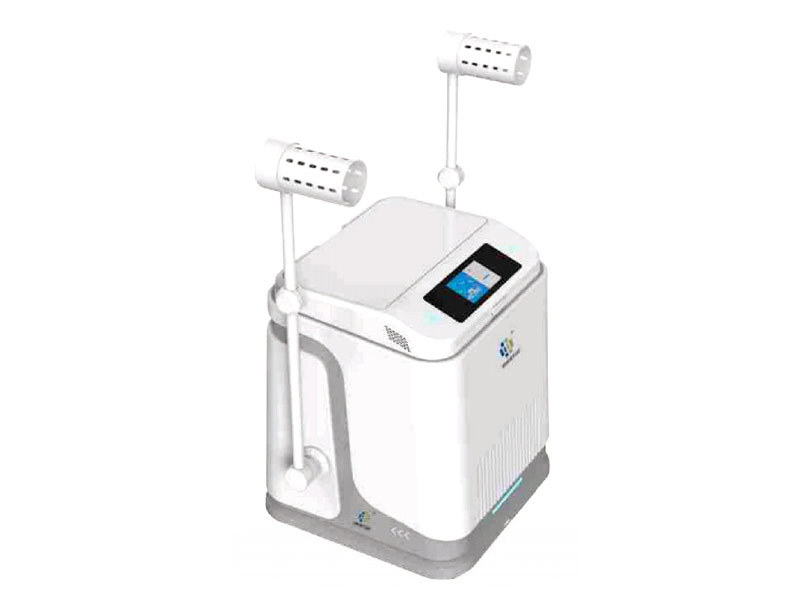

- Description
-
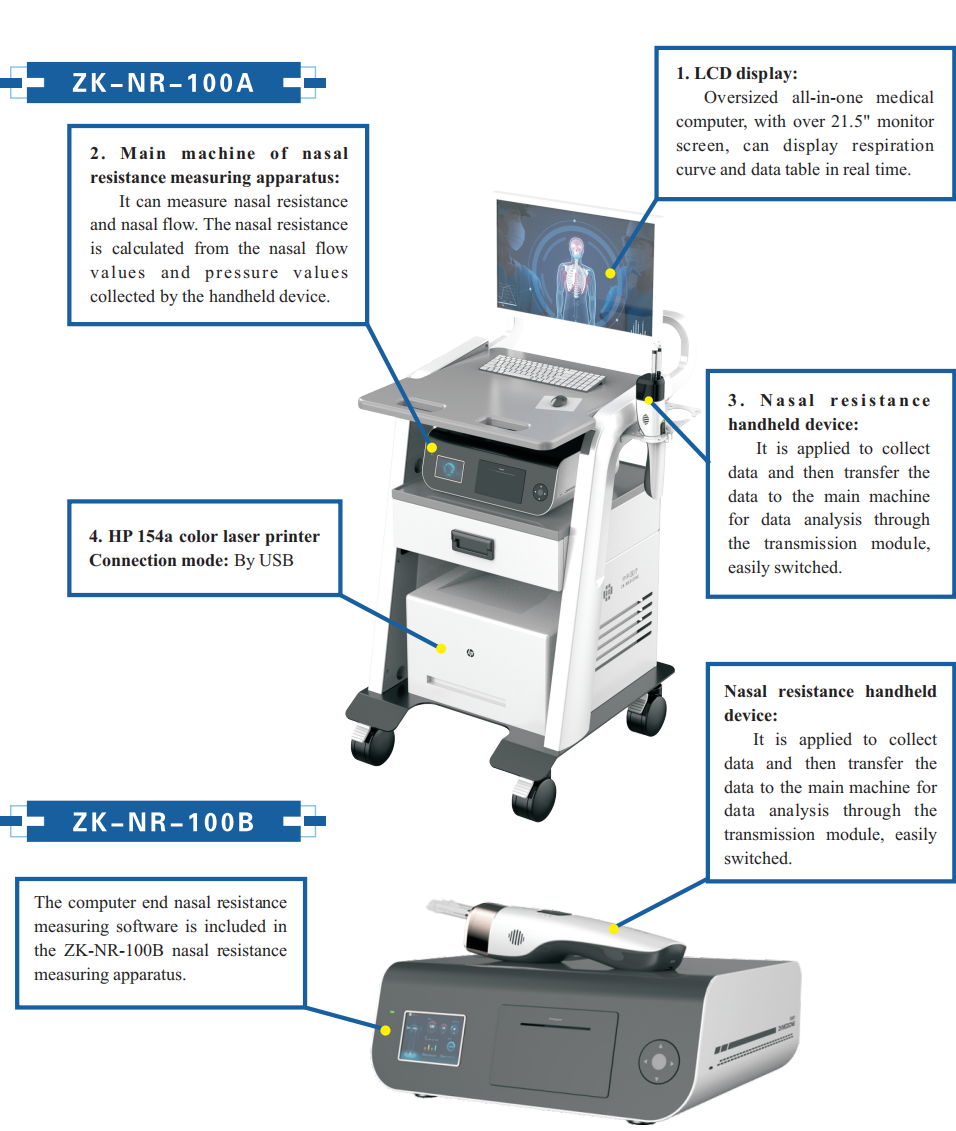
Nasal resistance measuring apparatus can be utilized for diagnosis and assessment of nasal respiratory function in Otolaryngology Department. The resistance values of nasal expiration and inspiration detected are significant for measuring the grade of nasal patency. In terms of different resistance values, the degree of nasal obstruction can be determined as normal, mild obstruction,moderate obstruction, and severe obstruction. At the same time, the international four quadrant display mode can directly reflect the whole process of respiratory circulation. More scientific, more reasonable and more advanced four-phase nasal resistance test system is able to reflect the meaning of human breathing more perfectly and scientifically
THREE CORE INNOVATIVE TECHNOLOGIES
Hand-held gear-type nasal resistance measurement method
——simplifying measurement process

▪ Practical new type patent
▪ Original gear type, easy to switch and operate
Disposable nasal resistance pressure extraction sensor
——preventing cross-contamination
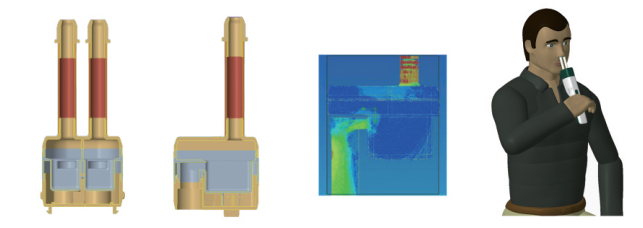
▪ In comparison with the traditional mask measurement mode, the disposable nasal resistance pressure extraction sensor can effectively prevent cross-contamination.
▪ The sensors are available in a variety of models and sizes to meet the needs of different groups, and the silicone material is more comfortable and reliable.
Advanced low-noise acquisition digital signal analysis and processing technology
——more accurate and reliable

▪ A high-precision, low-noise respiratory flow sensor is developed independently by using the latest A+K balanced flow detection principle.
▪ Digital filtering and curve fusion are applied for analysis and calculation. Four respiratory cycle signals are fused for each test to calculate the relevant parameters.
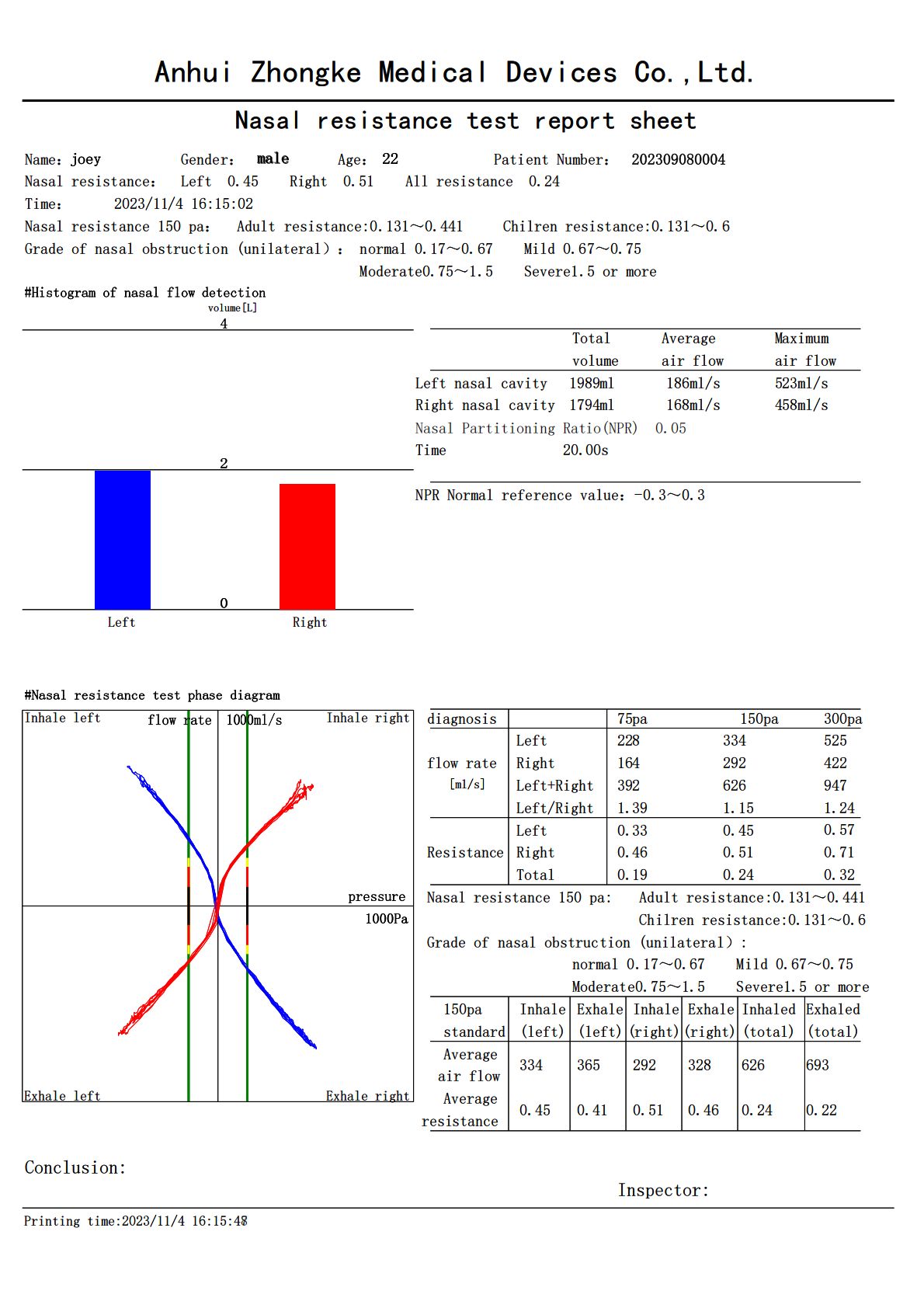
CLINICAL SIGNIFICANCE
▲For distinguishing between multiple influencing factors:
Empirical error of physicians
Subjective false inference of patients
Misunderstanding of nasal passage patency of patients due to oral breathing.
▲For objectively determining surgical comfort/contraindications:
Excessive width of the cavity relative to the isthmus, deviation or deflection of the ridges
Excessively soft nasals, mobile polyps
▲For confirming current nasal allergy status
▲For aiding in the diagnosis of nasal hypersensitivity:
The influence of allergens on the degree of nasal obstruction can be determined by the
magnitude of nasal resistance.
▲For objectively determining the non-nasal factors causing oral respiration
▲For quantifying the degree of nasal passage patency
Key words:
Nasal resistance meter


